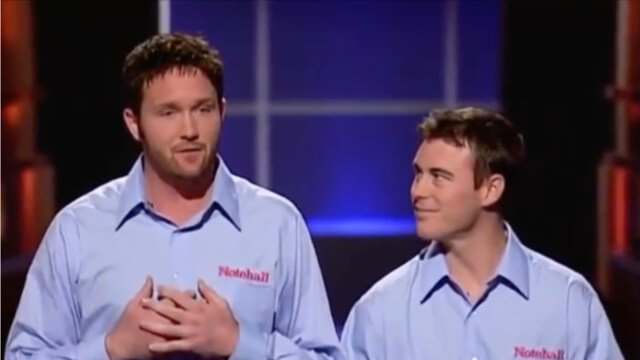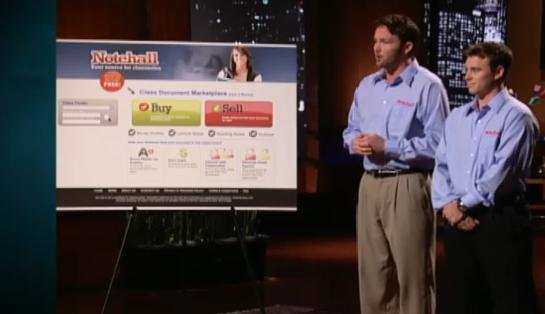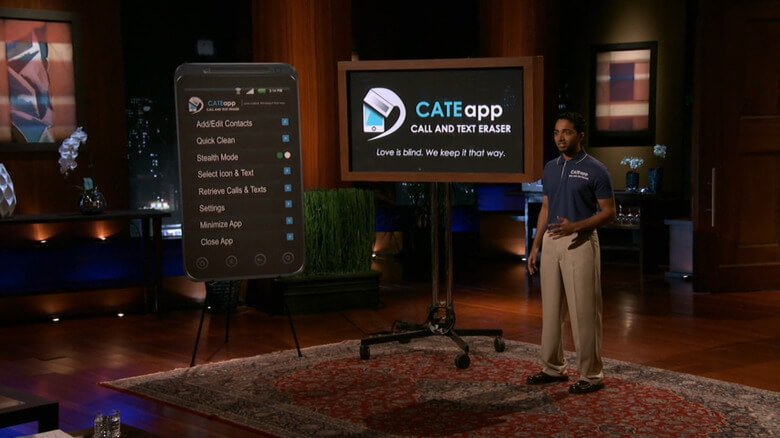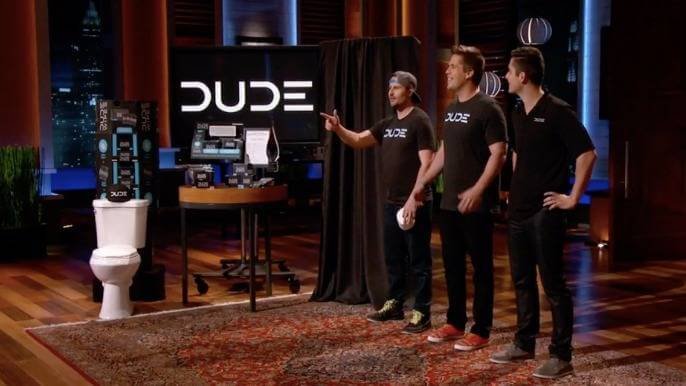Welcome to an exciting journey into the world of entrepreneurial success stories, where innovation meets opportunity. Today, we delve into the story of Notehall, a company that captured the attention of millions through its appearance on the popular television show, Shark Tank. If you’re curious about how a simple idea can transform into a thriving business, you’re in the right place.
Notehall is a fascinating example of what happens when young entrepreneurs take a leap of faith. They step into the Shark Tank, hoping to convince seasoned investors to believe in their vision. With a unique concept and a compelling pitch, they aim to secure the funding needed to take their business to the next level.
Notehall appeared in Shark Tank Season 1 and secured an investment from Barbara Corcoran.
In this article, we’ll explore Notehall’s journey, from its inception to its memorable Shark Tank pitch. We’ll uncover whether they managed to secure a deal with the Sharks and what made their pitch stand out. So, sit back, relax, and let’s dive into the story of Notehall and its Shark Tank adventure.
Contents
ToggleNotehall Overview
Notehall is an innovative platform designed to revolutionize the way students access and share study materials. Founded by a group of ambitious college students, the company aimed to create a marketplace for class notes, study guides, and other educational resources. The idea was simple yet powerful: connect students who have valuable notes with those who need them.
The founders of Notehall recognized a common problem faced by students worldwide. Many students struggle to keep up with lectures and assignments, and they often miss out on essential information. Notehall aimed to bridge this gap by providing a platform where students could buy and sell notes, ensuring everyone had access to the resources they needed to succeed.
The platform quickly gained traction, especially among university students who saw the value in having access to high-quality study materials. Notehall’s success was driven by its user-friendly interface, which made it easy for students to upload, browse, and purchase notes. The founders’ commitment to quality and their focus on building a strong community of users played a crucial role in the platform’s growth.
As Notehall gained popularity, it caught the attention of investors and entrepreneurs who saw its potential to disrupt the traditional education system. The founders knew that to take their business to new heights, they needed additional funding and strategic partnerships. This realization led them to the doors of Shark Tank, where they hoped to secure a deal that would propel Notehall into the mainstream.

Notehall Shark Tank Pitch: Did They Secure a Deal?
The moment had arrived for Notehall’s founders, Stephan and Conway, to present their business to the Sharks. They entered the Tank seeking a $90,000 investment in exchange for 10% equity in their company. With a well-prepared pitch, they aimed to demonstrate the value of their platform and convince the Sharks to invest in their vision.
The pitch began with Stephan and Conway sharing the success of their pilot launches at Arizona State University and Kansas State University. They highlighted the impressive 40% student participation rate in just the first year, which translated to nearly 6,000 customers and $30,000 in revenue. These numbers showcased the demand for Notehall’s services and its potential for growth.
The Sharks were intrigued by the concept and the founders’ ability to capture a significant portion of the student market. However, Kevin O’Leary raised concerns about potential competition entering the market. Conway confidently explained that Notehall’s focus on attracting content providers set them apart. While competitors chased paying users, Notehall ensured a steady flow of valuable content, a crucial factor for long-term success.
As the pitch progressed, the Sharks engaged in a lively discussion about Notehall’s business model and growth strategy. The founders’ passion and commitment to their mission resonated with the Sharks. They recognized the potential impact Notehall could have on the education sector.
While the outcome of the pitch remains a point of interest, it’s important to note that appearing on Shark Tank provided Notehall with invaluable exposure. The platform gained recognition and attracted a broader audience, setting the stage for future growth. For more insights into Notehall’s journey and other exciting entrepreneurial stories, be sure to visit SharkWorth, your go-to source for all things Shark Tank.
Notehall Networth
When Notehall appeared on Shark Tank, it was a pivotal moment for the company. The founders, Stephan and Conway, asked for a $90,000 investment for 10% equity. This valued the company at $900,000. The valuation seemed ambitious for a startup, yet it reflected their confidence in their platform’s potential.
At the time of their pitch, Notehall had shown promising results. They had launched pilot programs at major universities, capturing a significant portion of the student body. This initial success was a testament to the platform’s appeal and the demand for a marketplace of study materials.
After their Shark Tank appearance, Notehall’s exposure increased significantly. This exposure often leads to a surge in interest and user base, even if a deal is not secured. The company’s net worth would have been influenced by this newfound attention and the potential increase in users and revenue.
It’s crucial to understand that net worth is not just about immediate financial gain. It’s about the platform’s potential to grow and expand its reach in the education sector. Notehall’s innovative approach and initial success laid a solid foundation for its future valuation.
Notehall After Shark Tank
The Shark Tank experience was transformative for Notehall. Whether they secured a deal or not, the exposure was invaluable. Many businesses find that appearing on the show opens doors to new opportunities, partnerships, and a broader customer base.
After the show, Notehall continued to focus on its core mission of connecting students with valuable study resources. The platform’s user-friendly interface and the community-driven approach remained key to its ongoing success. These elements helped maintain and grow their user base.
Notehall’s journey after Shark Tank involved refining its business model and expanding its reach. The feedback and insights gained during the show likely played a role in shaping their strategies moving forward. This adaptability is crucial for startups aiming to thrive in competitive markets.
In addition to organic growth, Notehall’s appearance on Shark Tank likely attracted interest from other investors and partners. This interest can lead to additional funding, strategic alliances, and opportunities to scale the business further.
Is Notehall Still in Business?
As of the latest updates, Notehall has made significant strides in the education technology sector. The company has continued to evolve and adapt to the changing needs of students and educational institutions.
Notehall’s focus on providing a reliable and efficient platform for sharing study materials has kept it relevant. The education landscape is always changing, and there is a constant demand for innovative solutions. Notehall’s ability to address this demand has been key to its sustainability.
The company’s ongoing success can be attributed to its commitment to quality and user satisfaction. By maintaining a strong community of users and content providers, Notehall has ensured a steady flow of valuable resources.
While details about Notehall’s current operations may not be widely publicized, the foundation they built through their Shark Tank experience and subsequent growth efforts suggests they are still a player in the market. The entrepreneurial spirit that drove their initial success likely continues to guide their journey today.

What’s Next For Notehall
After their memorable appearance on Shark Tank, Notehall’s journey was far from over. The exposure they received was a game-changer, opening doors to new opportunities and partnerships. But what lies ahead for this innovative platform? Let’s explore the exciting possibilities that await Notehall.
First and foremost, Notehall’s focus remains on expanding its user base. The education sector is vast, and the potential to reach more students is immense. By tapping into new markets and universities, Notehall aims to increase its presence and impact. Their goal is to become the go-to platform for students seeking reliable study resources.
Innovation is key to staying relevant in the ever-changing education landscape. Notehall understands this and is committed to enhancing its platform. They plan to introduce new features and tools that make it even easier for students to access, share, and benefit from study materials. By continuously improving their offerings, Notehall ensures they meet the evolving needs of their users.
Collaboration is another avenue Notehall is keen to explore. Partnering with educational institutions, publishers, and other stakeholders can bring fresh perspectives and resources to the platform. These collaborations can lead to the development of exclusive content and services, further enriching the Notehall experience for students.
Moreover, Notehall’s commitment to quality remains unwavering. They understand that the success of their platform hinges on the value of the content they provide. By maintaining a strong community of content providers, Notehall ensures a steady flow of high-quality study materials. This commitment to excellence sets them apart from competitors and strengthens their position in the market.
As Notehall looks to the future, their entrepreneurial spirit continues to drive their journey. They are determined to make a positive impact on the education sector and empower students worldwide. With a clear vision and a passion for innovation, Notehall is poised for continued success.
Notehall’s Products and Services
At the heart of Notehall’s success is its range of products and services designed to meet the needs of students. Let’s take a closer look at what Notehall offers and how it benefits its users.
The core of Notehall’s platform is its marketplace for study materials. Here, students can buy and sell class notes, study guides, and other educational resources. This marketplace is a valuable tool for students who may have missed lectures or need additional study aids. By connecting note providers with those in need, Notehall creates a win-win situation for all.
One of the standout features of Notehall is its user-friendly interface. The platform is designed to be intuitive and easy to navigate, ensuring students can quickly find the resources they need. Whether you’re uploading notes or browsing for study guides, Notehall makes the process seamless and efficient.
Notehall also places a strong emphasis on community. They have built a vibrant network of users who actively contribute to the platform. This sense of community fosters collaboration and encourages students to share their knowledge. By creating a supportive environment, Notehall enhances the learning experience for everyone involved.
In addition to its marketplace, Notehall offers a range of tools to support student success. From organizational features to study tips, the platform provides valuable resources to help students excel academically. These tools are designed to complement the study materials available on Notehall, offering a comprehensive solution for students.
Overall, Notehall’s products and services are tailored to meet the diverse needs of students. By providing access to quality study materials and fostering a collaborative community, Notehall empowers students to achieve their academic goals. Their commitment to innovation and user satisfaction ensures they remain a trusted resource in the education sector.
FAQ’s
What Are the Latest Updates About Notehall Shark Tank?
Notehall’s appearance on Shark Tank brought significant attention to the platform. The exposure helped them reach a broader audience and opened doors to new opportunities. Since then, Notehall has continued to evolve, focusing on expanding its user base and enhancing its platform to better serve students.
Did Notehall Get a Deal on Shark Tank?
During their Shark Tank pitch, Notehall’s founders sought a $90,000 investment for 10% equity. The Sharks were impressed by their concept and initial success. While the pitch was well-received, it’s important to note that the exposure from the show itself significantly boosted Notehall’s visibility, regardless of a formal deal.
What Happened to Notehall Shark Tank?
After their Shark Tank appearance, Notehall gained considerable attention, which helped increase their user base and interest from potential partners. The platform continued to focus on its mission to connect students with valuable study resources, refining its business model and expanding its reach in the education sector.
Who Owns Notehall?
Notehall was founded by a group of ambitious college students, including Stephan and Conway. They played a pivotal role in developing the platform and bringing it to Shark Tank. The ownership details may have evolved as the company grew and potentially attracted new investors or partners.
Is Notehall Successful Now?
Notehall has made significant strides in the education technology sector. Their focus on providing a reliable platform for sharing study materials has kept them relevant. The company’s ongoing success is attributed to its commitment to quality and user satisfaction, maintaining a strong community of users and content providers.
What We Know About The Founder?
Notehall was co-founded by Stephan and Conway, who were college students at the time. Their innovative idea stemmed from a common problem faced by students: the need for accessible study materials. Their entrepreneurial spirit and commitment to education have been key drivers in Notehall’s journey.










